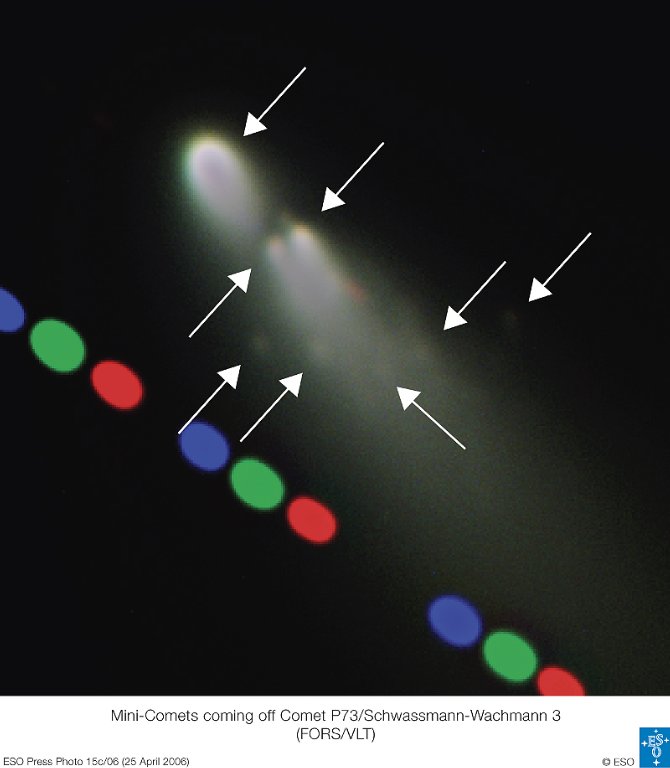
Crumbling Comet Schwassmann-Wachmann 3 Approaches
Today I added a link to the ‘Great Link’s on the right sidebar to a fine ET extinction and Younger Dryas Boundary round-robin thrown last year by the Journal of Cosmology. The Journal solicited a number of distinguished contributers both supportive and dismissive of the idea the earth encountered a game-changing cosmic swarm 13,000 years ago.
These papers make excellent fodder for the Tusk and I will put up a several of them in the next few weeks. I debated which I wanted to post first, and decided to separately post two of my favorites. First, below, from the indefatigable Bill Napier; and a second less familiar but welcome voice, anthropologist Terry Jones, PhD of the University of California Polytech State, San Luis Obispo, California.
Below is Napier’s abstract and here is a link to his full paper from the Journal of Cosmology.
Comets, Catastrophes, and Earth’s History
There is now compelling evidence that an exceptionally large (50-100 km) comet entered a short-period, Earth-crossing orbit some time in the Upper Palaeolithic, and underwent a series of fragmentations. During this disintegration the Earth was probably subjected to occasional episodes of intense bombardment. Such an episode might constitute a sensible astronomical framework for understanding the postulated catastrophe at 12,900 BP. Concentrations of sub- kilometre bodies may still exist in meteor streams and constitute a significant hazard. Such bodies are difficult to detect, and current deflection and mitigation strategies do not seem adequate to deal with them. For larger bodies, a paradox exists in that the number of comets expected to be thrown into Halley-type orbits (periods 20-200 years) is at least two orders of magnitude greater than observed. The fate of these comets is unknown, raising the prospect that a significant population of dark Earth-crossing comets may exist and adding further uncertainty to impact hazard assessments. Discrete bombardment episodes are evident in the well-dated impact record of the past 250 Myr and several coincide with transitions between geological periods. There is evidence that these episodes have a ∼ 35-37 Myr periodicity, which may be connected to Galactic disturbances of the Oort comet cloud. The threshold for periodicity begins for impact craters >∼ 40 km in diameter; since this is also the threshold which impact ejecta create worldwide conflagration, it again implies that comets are a significant, if not dominant, component of the global impact hazard. W. M. Napier, Journal of Cosmology, November 2009

